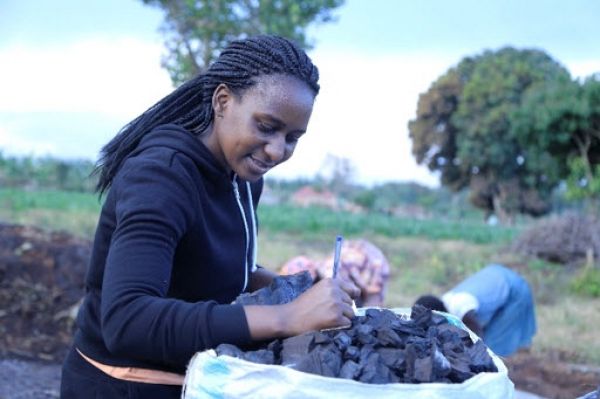In Africa, charcoal is ubiquitous as an energy source for cooking, even in urban areas where electricity and gas are available. Yet when Catherine Nabukalu was taking courses on energy as part of her degree in the Master of Environmental Studies program at Penn, she noticed charcoal was often left out of the conversation about energy sources and their contribution to global carbon emissions.
“We would systematically go through coal, then nuclear, then hydropower, then geothermal, solar, etc.,” says Nabukalu, now a project coordinator at the District of Columbia Sustainable Energy Utility. “You become aware that something is missing. Just because you don’t have electricity, doesn’t mean you don’t have energy.”
Reto Gieré, a professor in the Department of Earth and Environmental Science, encouraged her to research charcoal as an energy source for her final paper in his course, Energy, Waste, and the Environment. He then helped her get funding to travel to her native Uganda to continue to pursue the topic as an independent project that they conceptualized together. Nabukalu and Gieré shared the findings in a paper published in the journal Resources.
“I’m African, and I’ve used charcoal personally,” says Nabukalu. “It’s not fun to use, cooking is often not a healthy or enjoyable experience, but it’s a big part of the energy mix. It’s not the only source, but it’s one of them.”
As a step toward better understanding the full life cycle of charcoal, from creation to consumption, Nabukalu spent time at a number of sites in Uganda where charcoal is created, traded, sold, and consumed. She observed and interviewed participants at each of these stages and reviewed the literature about charcoal production and use worldwide. Gieré and Nabukalu shared some of the key results from this research with Penn Today that shed light on an overlooked source of energy.
Continue reading at University of Pennsylvania
Image via University of Pennsylvania


